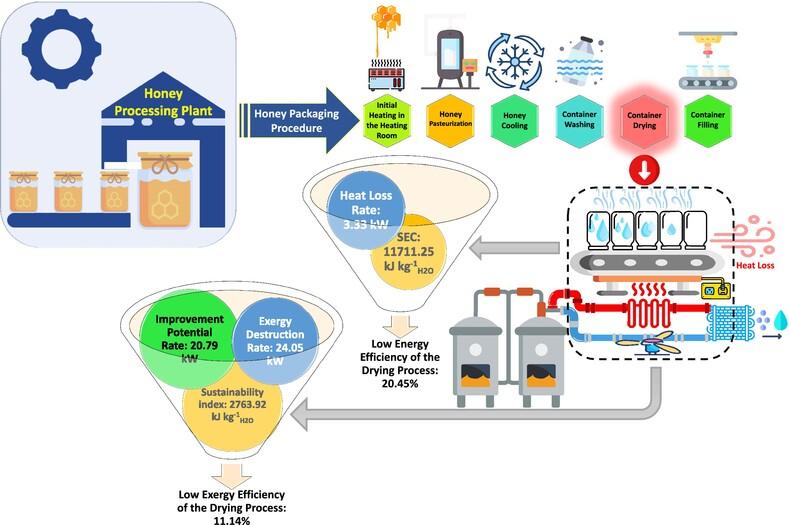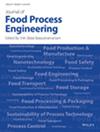Thermodynamic performance of hot air drying system: Energy and exergy analysis for wet glass containers in honey processing plant
Abstract
Considering environmental challenges and the diminishing share of energy expenses in the final product cost, evaluating energy-intensive systems is crucial. This study examines the drying process of wet glass containers in a honey processing plant using a continuous convection dryer through energy and exergy analyses. Mass, energy, and exergy balances were performed using EES software. The energetic performance indicators revealed a heat loss rate of 3.33 kW, energy efficiency of 20.45%, and specific energy consumption of 11711.25 kJ kg-1H₂O. Exergetic performance indicators included an exergy destruction rate of 24.05 kW, improvement potential rate of 20.79 kW, total exergy efficiency of 14.14%, exergy efficiency of 11.14%, specific exergy consumption of 2763.92 kJ kg-1H₂O, and a sustainability index of 1.16. Results indicated that 60.12% of exergy destruction is related to air heating, with exhaust air losing 200.54 kW, equivalent to 89.84% of total input energy, suggesting exhaust air recirculation to reduce losses.
Practical applications
The wet container dryer in a honey processing plant, as the most energy-intensive component, was chosen for thermodynamic analysis. Mass, energy, and exergy balances were conducted to evaluate the system's thermodynamic performance. The exhaust air dryer lost 200.54 kW, equivalent to 89.84% of the total input energy, without utilization. Additionally, the results showed that 60.12% of the total exergy destruction in the convective drying process was related to air heating. Therefore, recirculating the exhaust air from the dryer moves the system toward an ideal thermodynamic state.


 求助内容:
求助内容: 应助结果提醒方式:
应助结果提醒方式:


